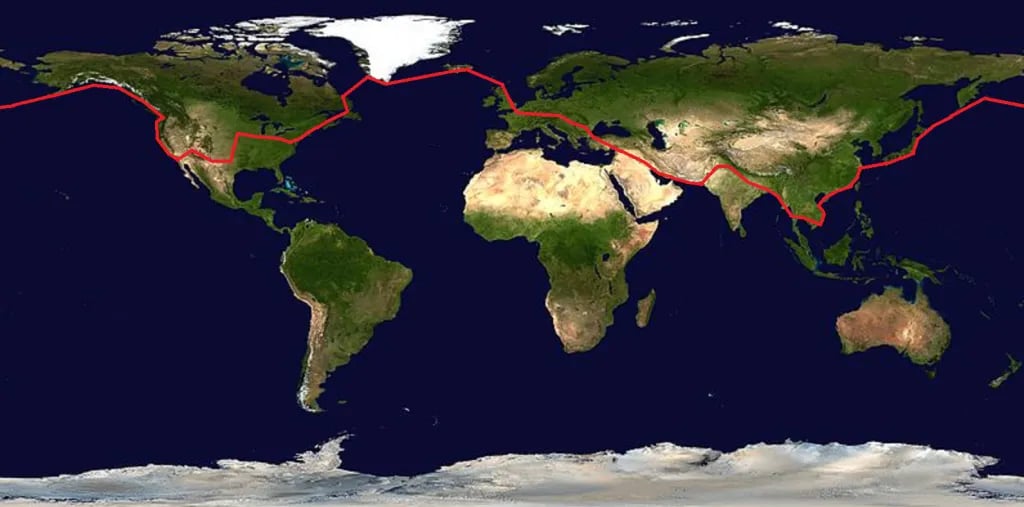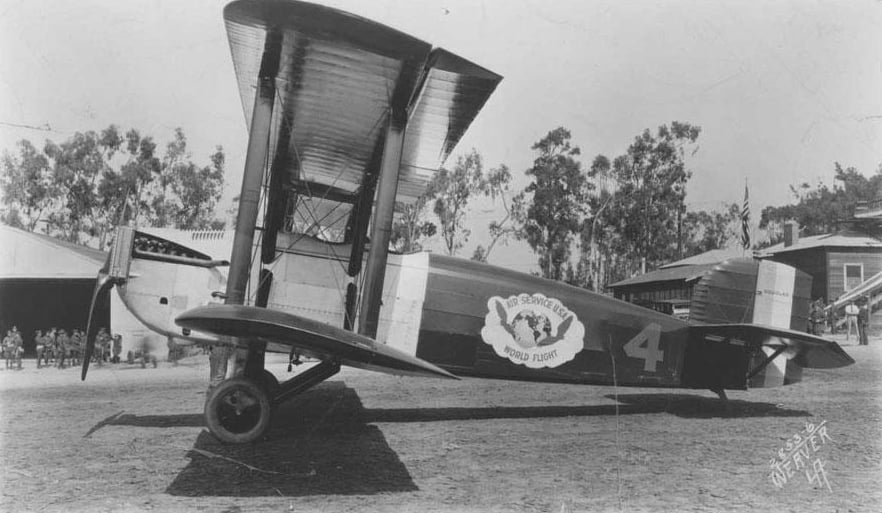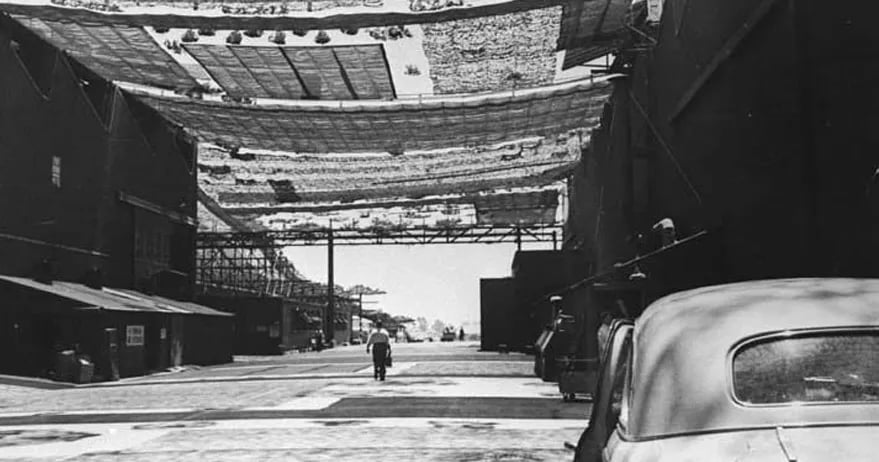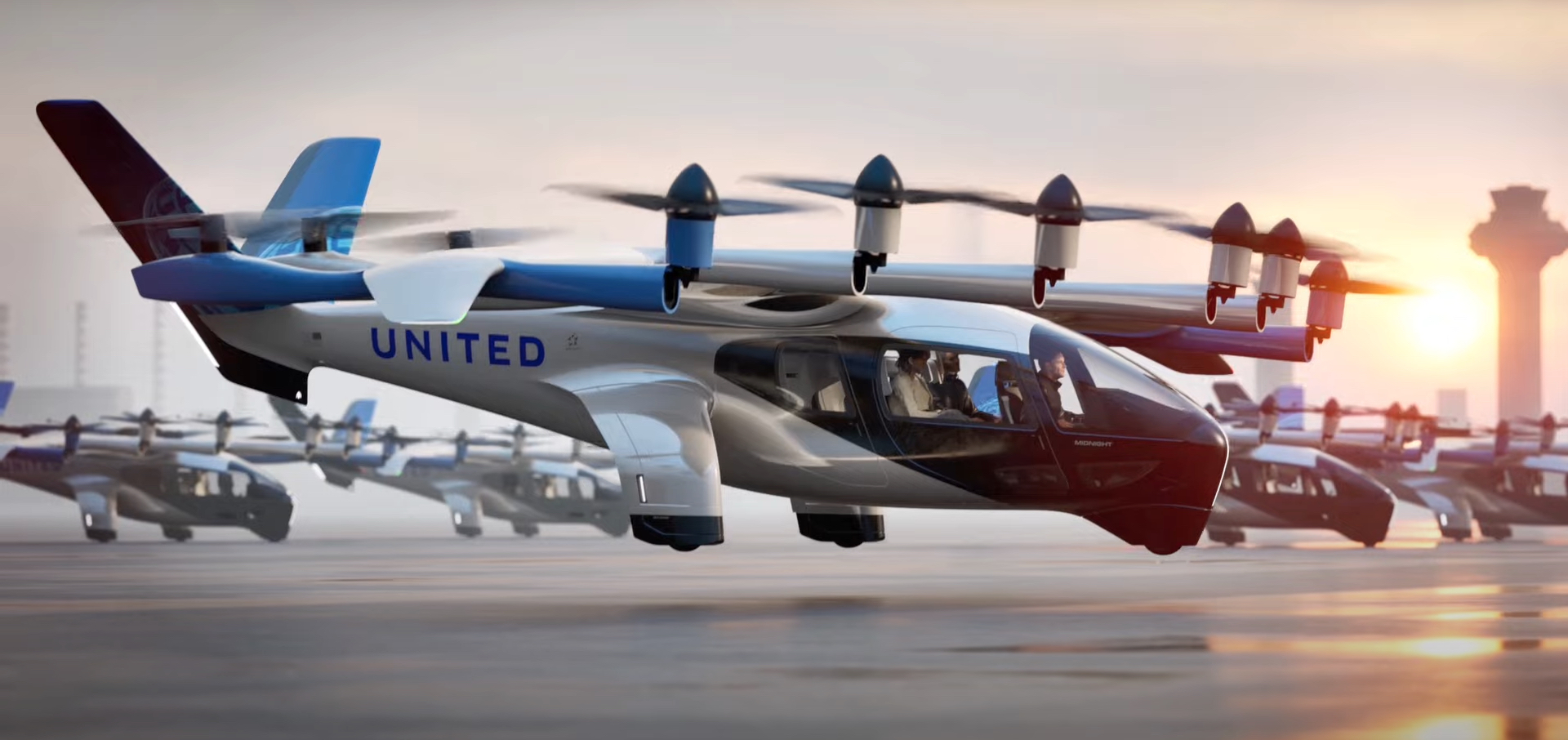This weekend, the Santa Monica Airport (SMO) is holding a special open day event to celebrate the 100th anniversary of the first ever flight around the world. This monumental accomplishment was achieved by four aviators from the Army Air Service — the precursor of the US Air Force — flying aircraft manufactured by the Douglas Aircraft Company, which was based at the airport when it was still known as Clover field.
Four aircraft, each named after a US city, Seattle, Chicago, Boston and New Orleans, left Clover Field, Santa Monica, on 17 March 1924, for Sand Point in Seattle, Washington for the official start of the journey. The Seattle crashed in dense fog on the Alaska Peninsula on April 30, but thankfully everyone survived. Then on August 3, an oil pump failure forced the Boston down into the Atlantic Ocean between the Orkney Islands and Iceland. Again, thankfully everyone survived.
The New Orleans and the Chicago flew into Boston and then onto Washington DC in early September, along with the original prototype World Cruiser, now named the Boston II, that had flown to join them from California. Logging 27,553 miles in 175 calendar days with an actual flying time of 371 hours, the New Orleans and the Chicago touched down in 28 countries and had to replace entire engines and other components multiple times along the way.
The incredibly brave aviators were Major Frederick Martin, overall flight commander who piloted the Seattle, Lt. Lowell Smith piloted the Chicago, Lt. Leigh Wade piloted the Boston and Lt. Erik Nelson piloted the New Orleans. Their equally courageous co-pilots/flight mechanics were SSgt. Alva Harvey for the Seattle, TSgt. A.H. Turner for the Chicago and SSgt. Henry Ogden for the Boston.

The Chicago eventually ended up at the National Air and Space Museum in Washington DC and the New Orleans was donated to the Los Angeles County Museum of Natural History before being moved in 1957 to the National Museum of the United States Air Force in Dayton, Ohio.
Before the Santa Monica Museum of Flying was located where it currently resides at 3100 Airport Ave, it was situated on the north side of the airport runway and the New Orleans was proudly on display. During the late 80s, when it was decided to construct a new, dedicated building, the World Cruiser was disassembled and put into a storage facility in Torrance, where it has remained ever since.
At that time, conversations were conducted between the Natural History Museum and the Museum of Flying and it was decided that a special air-conditioned, climate controlled environment would be needed to preserve the fragile skin of the airframe. The 50ft wingspan also provided its own unique set of challenges. Ultimately however, the Museum of Flying was unable to fund such a specific and expensive dedicated structure.
However, earlier this year, in April, during an event held at the Cloverfield on the anniversary of the World Cruiser aircraft departing Santa Monica’s Cloverfield airstrip, the possibility of the New Orleans World Cruiser returning to Santa Monica Airport received a significant boost.

Credit: Santa Monica Museum of Flying
Beth Werling, Collections Manager for the Natural History Museum (NHM) of Los Angeles County said, "The museum’s intention has always been to display the New Orleans someplace locally … We’re at the beginning stages and [we’re] listening to the new vision for the Santa Monica airport and how they intend to revitalize not just as a center for aviation in the 21st century, but also as more of a community center, which really taps into what NHM is trying to do as far as taking history, taking our collections outside the museum walls and into the community and making it more of a dialogue, rather than just a one sided feeding of information."
"So we’re at the very beginning stages, as I said, discussing partnerships and seeing what’s available and of course, a lot depends on what the city of Santa Monica and the community decide on what they want here," Werling said.
"If there’s a possibility that it could return to Santa Monica, that would be wonderful and would give everyone, young and old, a chance to enjoy and learn about the pivotal role this city has played in global aviation, giving visitors and tourists from around the world the chance to learn how important this was in creating the world of flying that we see today," Steven Benesch, Operations Manager at the Museum of Flying, told the Daily Press.
A whole host of activities and events are planned for Sunday guaranteed to entertain aviation aficionados of all ages, including a live performance of The BeatBuds at 10:30am for kids aged 2-6, actual flight simulators where children and adults alike can experience the thrill of flying, STEM and aviation career booths run by the FAA, the chance to meet Mayor Phil Brock, face painting, bracelet making, a bouncy castle and historic bus tours.
Douglas Day 2024 is on Sunday, September 22, 2024, from 10am–3pm at Atlantic Aviation, 2828 Donald Douglas Loop North, Santa Monica. Visit spiritofsantamonica.org for more details.
SMO – Past
In 1936, the legendary Douglas Commercial 3, or DC-3, was developed and mass produced at SMO, which was the first plane that could profitably carry only passengers without relying on mail subsidies. This new, avant garde aircraft could fly from New York to Los Angeles in just 18 hours, requiring only three stops along the way. The DC-3 was later repurposed into the C-47, which was used to drop tens of thousands of US paratroopers into occupied Normandy for D-Day in June 1944.

Credit: The Santa Monica Museum of Flying
The aviation industry was well and truly taking off and it brought a wealth of business and employment opportunities to Santa Monica. As a morale booster for his employees, who were now working round-the-clock shifts to produce aircraft for the Allies, Douglas opened the Aero Theater on Montana Ave and kept it open 24 hours a day.
With the war raging in Europe — and predating the attack on Pearl Harbor by some time — Donald Douglas believed that the West Coast was vulnerable to attack from the Pacific and SMO would be a prime target. So, together with his chief engineer and set designers from Warner Brothers Studios, they created an elaborate, full-size fake city, to conceal the entire site when viewed from the air.
This new, non-existent "neighborhood" was constructed by using five-million square feet of chicken wire stretched across and supported by more than 400 giant poles, each about 20 feet high, forming a canopy over the entire site. On top of this were placed lightweight wooden houses, fences, clotheslines and even trees made from twisted chicken wire and feathers painted green. Streets and sidewalks were painted on the canopy to blend in with existing ones and the runway was painted to look like a plowed field.
SMO – Present
The Airport might be a shadow of its former self, but it still plays a significant role in contemporary Santa Monica culture. The unassuming semicircular structure that is Barker Hanger is without a doubt the most iconic local business enterprise still based at the site.

Credit: Barker Hanger
The enormous arch-type steel truss hanger was built by Bill Lear in 1954, an American inventor and entrepreneur best known for founding Learjet. However, the City refused to grant Lear permission to begin building his fleet of private aircraft, so he sold the building to Pacific Airmotive. Meanwhile, 1,400 miles to the east, another chapter in the history of this humble hangar was just beginning and involved a gifted engineer named James Barker.
He worked for North American Aviation in the early 60s building elements of the Apollo spacecraft and lived with his family in Tulsa, Oklahoma. James moved his family to Santa Monica in the late 60s where he took a job with Pacific Airmotive based. However, in 1969 the company reduced its aviation commitments and the space became vacant for the first time. The 35,000 sq ft site was offered to the City to buy, but they weren’t interested, so James bought it.
For another 15 or so years he continued aviation-contract engineering in the humongous hangar until his tragic death from leukemia in 1986. At this point, his daughter Judi, who was studying at Santa Monica College fell into the family business. She cleaned up the space and began to rent it out, ultimately turning it into a fully functioning venue with a personality all of its own.
Since then, the People’s Choice Awards, the NBA Awards and the MTV Awards have all been hosted here on numerous occasions and still are and legendary Australian rock band INXS recorded a live album INXS: Live at Barker Hangar in 1993.
SMO – Future
The future of Santa Monica Airport is still very much up in the air, pun intended. No one knows if the site will be turned into a park, or perhaps only some of the site will. And there are avid supporters of both outcomes. At the stroke of midnight on December 31, 2028, the form and function of this substantial swath of land could significantly change. Or not. And to be perfectly honest, the decision will more than likely go back and forth several times in the four years and three months before then.

But one thing is for sure, it seems the site is attracting a lot of interest with manufacturers of what could potentially be the next generation of aviation, electric vertical takeoff and landing (eVTOL) aircraft.
Earlier this year, Archer Aviation, an electric aircraft start-up company, announced a partnership with Atlantic Aviation and together the two companies will begin the development of electric aircraft infrastructure at Atlantic’s existing assets, including Santa Monica Municipal Airport.
San Jose-based Archer has been developing eVTOL aircraft since 2018 and Texas-based Atlantic is a leading fixed-base operator network and aviation services provider. With their combined resources, they aim to establish an air taxi service that utilizes existing assets at specific locations. Moreover, United Airlines has purchased a billion dollars worth of Archer-built aircraft and they’ve invested in the company three times already.
The company hopes to have a fully functioning "air taxi" service simultaneously operating in New York City and the Westside by 2025, with regular routes from Santa Monica to Malibu, Orange County, Burbank and beyond.
And among the many attractions at this Sunday’s event will be the chance to meet and talk to folk involved with this, along with Joby Aviation’s VR simulator will let attendees experience the future of eVTOL aircraft, showcases on hybrid-electric propulsion technology and a chance to see the Pipistrel Velis Electro, the first certified electric training airplane already in regular operation at Santa Monica Airport.
scott.snowden@smdp.com







